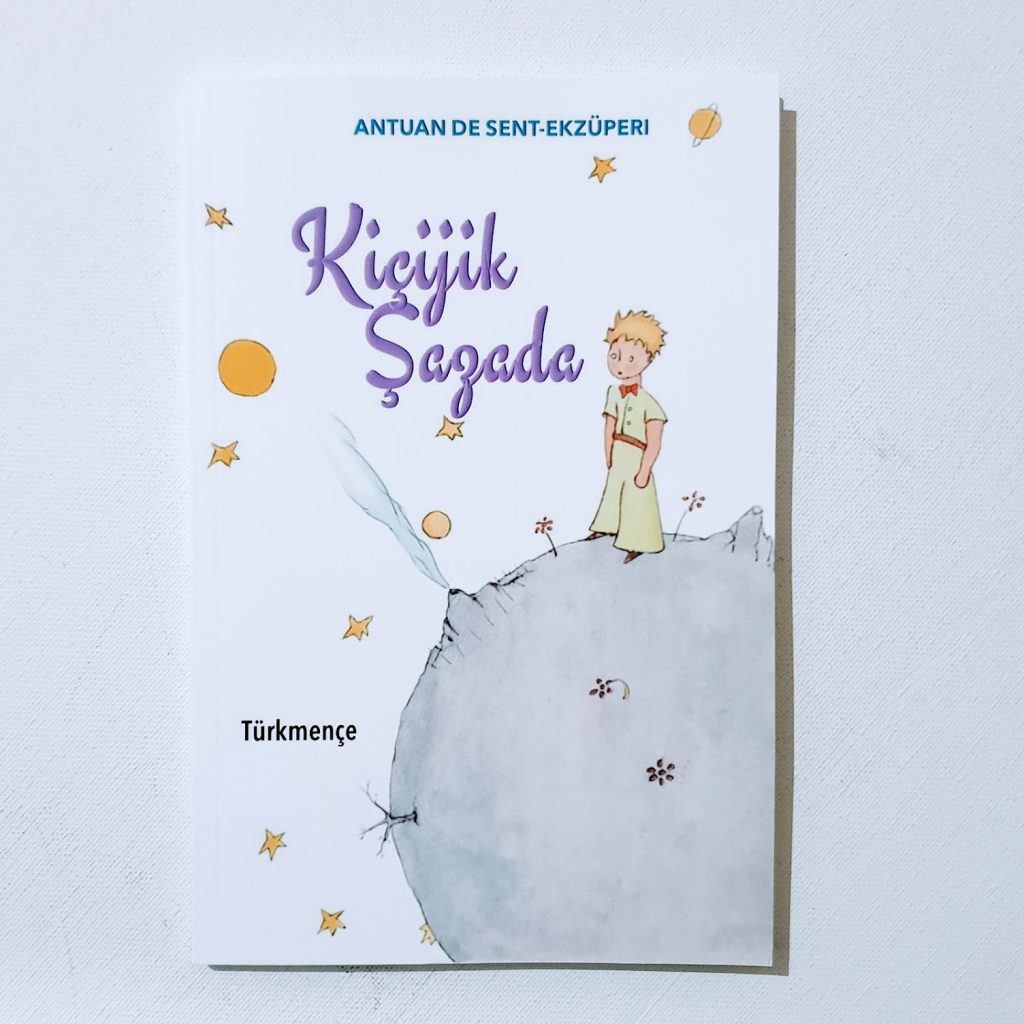
Kiçijik Şazada — in Turkmen language.
Turkmen language / Türkmençe / Türkmen Dili / Түркменче, is a member of the Turkic language family, primarily spoken in Turkmenistan, where it is the official language, as well as in neighbouring regions of Iran and Afghanistan. Turkmen is closely related to other Turkic languages like Turkish, Azerbaijani, and Uzbek, sharing many linguistic features and a common ancestry in the Turkic languages spoken by nomadic tribes in Central Asia.
Turkmen originated from the Oghuz branch of the Turkic languages, which spread across Central Asia through migration and conquests from the 8th century onwards. The Oghuz languages eventually evolved into modern languages such as Turkish, Azerbaijani, and Turkmen. Historical records of Turkmen are relatively sparse until the modern era, with the language primarily being transmitted orally through generations. The Soviet Union’s establishment led to significant changes in the Turkmen language, including the development of a standardised written form and changes in the alphabet used for writing Turkmen.
Turkmen is an agglutinative language, meaning that it forms words and expresses grammatical relationships through the addition of various suffixes to a base word. This includes inflections for tense, mood, and aspect in verbs, as well as case markings for nouns. The Turkmen vocabulary has been influenced by Russian, Persian, Arabic, and more recently, English, reflecting historical contacts and modern global influences. Despite these borrowings, the core of the Turkmen lexicon remains Turkic.
The Turkmen writing system has undergone several changes over the past century. Initially written in the Arabic script, it was replaced by the Latin alphabet in 1929, then by the Cyrillic alphabet in 1940, as part of Soviet language policy. After Turkmenistan gained independence in 1991, the Turkmen language reverted to a modified Latin alphabet, which is still in use today. In Cyrillic, the title of this book is written as Кичиҗик Шазада.
Turkmen is spoken by the majority of the population in Turkmenistan and serves as the primary language of education, government, and media. It is a key component of Turkmen national identity, particularly in the context of the state’s nation-building efforts following independence from the Soviet Union. Turkmenistan’s government promotes the Turkmen language and culture as central elements of the country’s heritage and identity.


